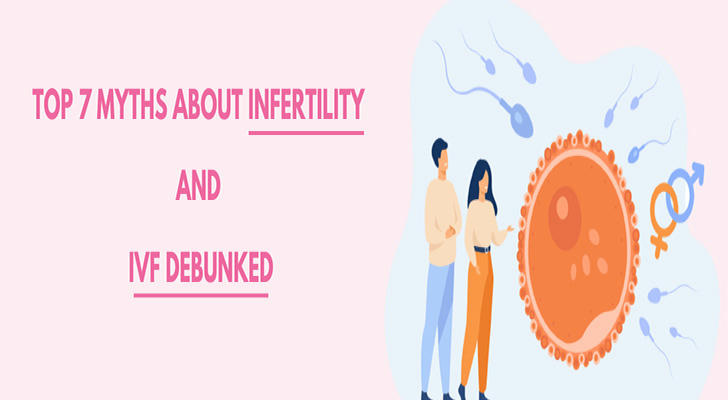7 Common Misunderstandings in Infertility Treatment: Have You Fallen Into Them?

Infertility affects millions of individuals and couples worldwide, yet it remains one of the most misunderstood areas of modern medicine. According to the World Health Organization (WHO), approximately 17.5% of the adult population globally—roughly 1 in 6 people—experience infertility during their lifetime. Despite growing awareness and advancements in assisted reproductive technology (ART), misconceptions still cloud decision-making and delay effective treatment.
In this article, we explore seven common misunderstandings in infertility treatment, offering clarity, evidence-based insights, and helpful perspectives to support more informed health choices.
1. Infertility Is Always the Woman’s Problem
This remains one of the most persistent myths. In reality, infertility affects men and women almost equally. According to data from the American Society for Reproductive Medicine (ASRM), in heterosexual couples experiencing infertility:
• 30% of the cases are due to male factors
• 30% are due to female factors
• 30% are caused by a combination of both
• 10% remain unexplained
Common male-related causes include low sperm count, motility issues, and hormonal imbalances. It is crucial for both partners to undergo thorough evaluation when facing difficulties conceiving.
2. IVF Guarantees Pregnancy
In vitro fertilization (IVF) is one of the most well-known fertility treatments, but it is not a guaranteed path to parenthood. Success rates depend on a variety of factors including age, cause of infertility, embryo quality, and clinic protocols.
The Centers for Disease Control and Prevention (CDC) reports that the average success rate of IVF per cycle for women under 35 is around 44.5%. For women over 40, this rate drops significantly, to less than 15%. This highlights the importance of realistic expectations and comprehensive consultation before beginning any treatment.
3. You Should Try for Years Before Seeking Help
Many couples delay seeking medical assistance because they assume that “it just takes time.” While patience is important, medical guidelines provide clear timelines:
• Women under 35 are advised to seek evaluation after 12 months of unprotected intercourse without conception.
• Women over 35 should consider evaluation after 6 months.
• Immediate consultation is recommended in cases of known reproductive conditions (e.g., polycystic ovary syndrome or endometriosis).
Early intervention often improves treatment outcomes and reduces emotional and physical strain.

4. Lifestyle Has Little Impact on Fertility
While some infertility causes are medical, lifestyle factors play a significant role. Research published in Human Reproduction Update confirms that factors such as body weight, smoking, excessive alcohol, high caffeine intake, and chronic stress can negatively affect reproductive health in both men and women.
For example:
• Obesity is linked to hormonal imbalances and ovulatory disorders.
• Smoking can reduce sperm quality and damage eggs.
• Stress may interfere with hormonal cycles and lower libido.
Addressing these lifestyle issues is often an essential part of fertility planning.
5. Fertility Treatments Are Only for Older Women
Age is certainly a major factor in fertility, particularly for women. However, young individuals may also face challenges due to genetic conditions, anatomical anomalies, autoimmune disorders, or environmental exposures.
Men’s fertility also declines with age, though more gradually. Sperm quality—including DNA fragmentation—increases with age and may affect embryo viability.
Fertility treatments are designed for individuals of various ages and diagnoses, not just those in advanced maternal age.
6. One Failed Treatment Means You’ll Never Conceive
Many patients experience disappointment after a failed cycle and may prematurely conclude that conception is impossible. In reality, multiple treatment cycles are often necessary to achieve success. The cumulative success rate improves over time.
According to the UK’s Human Fertilisation and Embryology Authority (HFEA), the chance of a live birth after three IVF cycles is significantly higher than after just one—reaching over 60% in some age groups. Fertility treatment is a process, and persistence, along with adjustments in protocol, can make a difference.
7. Natural Remedies Can Replace Medical Treatment
While there is growing interest in complementary therapies like acupuncture, herbal supplements, and mindfulness-based stress reduction, these should not be seen as replacements for medical treatment. Few natural remedies have been proven through rigorous clinical trials to treat underlying infertility causes.
That said, some supportive therapies may enhance overall well-being and help manage treatment-related stress when used alongside standard medical approaches. However, self-medicating without professional guidance may delay diagnosis and lead to missed windows of opportunity.

Conclusion
Infertility is a complex medical condition, and misinformation can add unnecessary emotional weight to an already challenging journey. Understanding the facts, consulting with qualified reproductive specialists, and staying informed about evidence-based options can lead to more empowered decisions.
Treatment paths vary from person to person. There’s no one-size-fits-all solution, but dispelling myths is a powerful first step toward building realistic expectations and achieving better outcomes.
If you're facing fertility concerns, consider speaking with a licensed reproductive endocrinologist to explore your specific situation and treatment possibilities.
